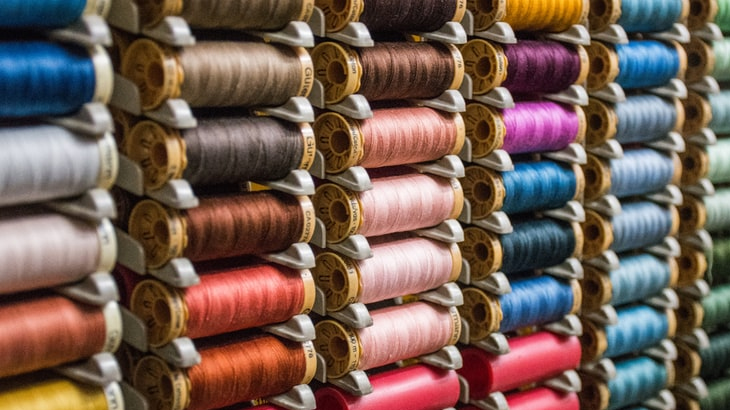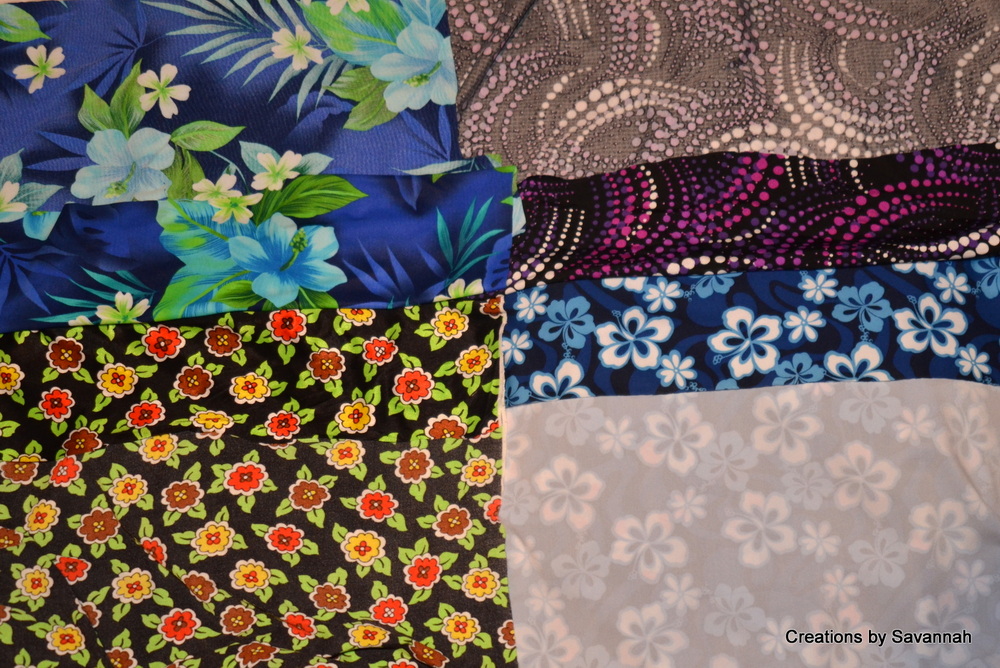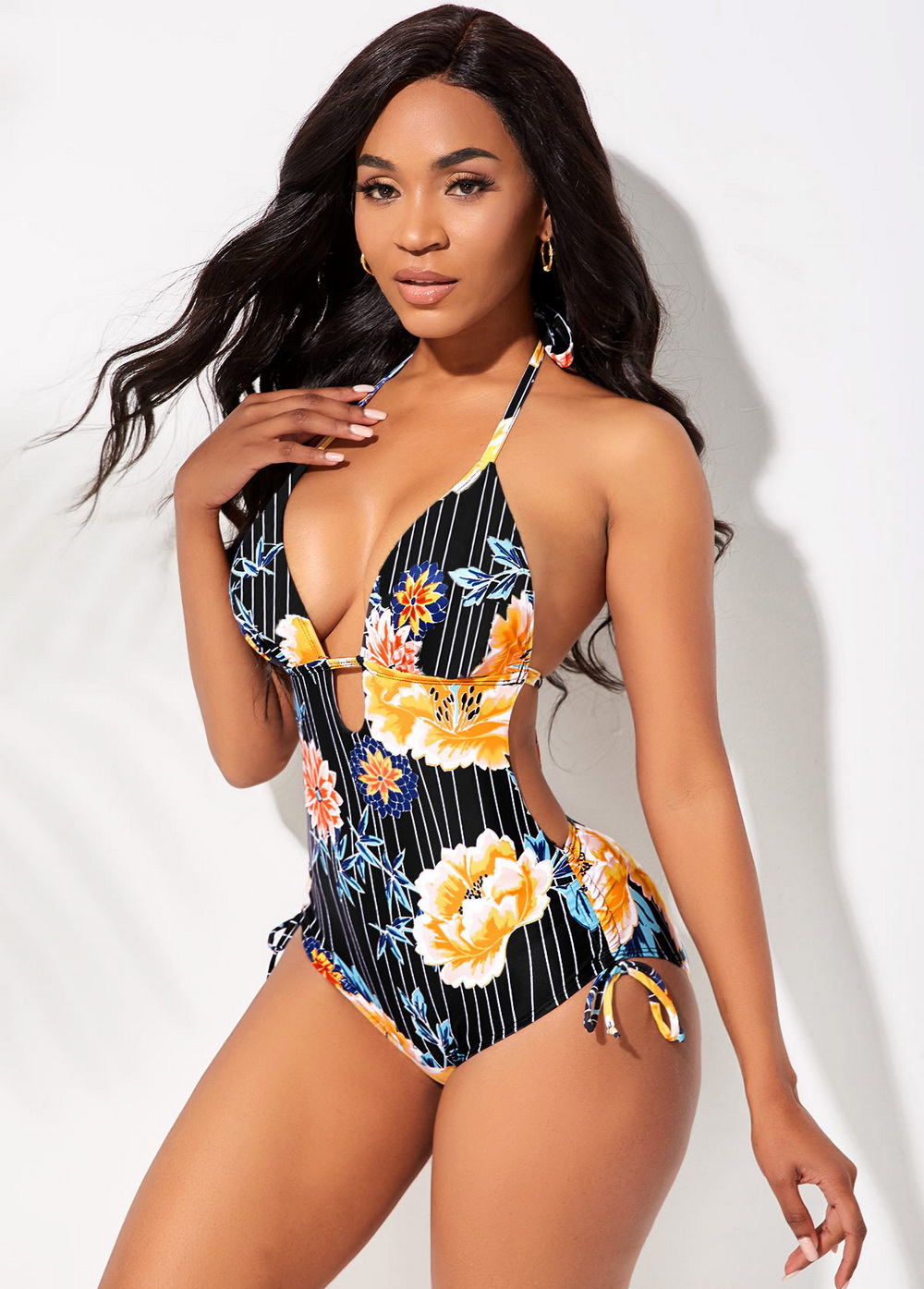Content Menu
● Introduction to Sewing Swimwear
>> Why Swimwear Needs Special Attention
● Understanding Durable Sewing Threads
>> What is Thread Durability?
>> Factors Affecting Thread Durability
● Best Thread Types for Swimwear
>> Polyester Thread: The Gold Standard for Swimwear
>> Nylon Thread: A Viable Alternative
>> Cotton Thread
>> Specialized Threads for Swimwear Manufacturing
● Tips for Swimwear Threads
>> Thread Weight and Thickness Considerations
>> Color Matching and Dyeing
>> Specialized Sewing Techniques for Swimwear
>> Sustainable Thread Options
>> Thread Quality Control Measures
>> Thread Storage and Handling
>> Educating Your Team
>> Customization and Value-Added Services
>> Troubleshooting Common Thread Issues
● Choosing the Right Thread for Your Swimwear Project
>> Matching Threads with Fabrics
>> Test Sewing
>> Sourcing High-Quality Threads
● Tips for Sewing Strong and Durable Swimwear
>> Double Stitching
>> Using the Right Needles
>> Proper Seam Finishing
● Future Trends in Swimwear Threads
● Conclusion
● Frequently Asked Questions (FAQs)
>> What is the best thread for sewing swimwear?
>> How can I make sure my swimwear is durable?
Discover the secret to crafting long-lasting swimwear with these top thread recommendations for unmatched durability in every stitch.
As a Chinese swimwear manufacturing factory providing OEM services to international swimwear brands, wholesalers, and producers, understanding the intricacies of swimwear production is crucial. One of the most critical aspects of creating high-quality swimwear is selecting the right thread. When it comes to sewing swimwear, the choice of thread is vital for ensuring durability, comfort, and aesthetic appeal. Swimwear is subjected to various elements such as water, chlorine, salt, and UV rays, which can significantly affect the longevity of the garment. In this comprehensive guide, we will explore the various types of threads suitable for swimwear manufacturing, their properties, and how to choose the best option for your specific needs.

Introduction to Sewing Swimwear
Sewing swimwear is a fun and creative project that allows you to make your own unique swimsuits. However, it is important to understand that swimwear is different from regular clothes. It needs special attention to ensure it is comfortable, long-lasting, and looks great in the water. Choosing the right thread is a key part of sewing swimwear.
Swimwear is often made from stretchy fabrics that need strong threads to hold everything together. If you use the wrong type of thread, your swimsuit might fall apart or lose its shape. That is why we must think carefully about what thread to use for swimwear. The right thread will help the fabric stay strong and durable, even after being exposed to water and sun.

Why Swimwear Needs Special Attention
Swimwear requires special materials because it is worn in water and often needs to stretch. Regular clothing is not always made to handle these conditions. Swimwear is also made from different types of fabrics that can be slippery or very stretchy. This means that the sewing techniques and materials must be tailored to avoid issues like seams ripping or fabric bunching up when wet.
In the following sections, we will explore the kinds of durable sewing threads that are best for sewing swimwear. We will learn about thread durability and why it matters. Understanding these details will help you create swimwear that not only looks fantastic but also lasts a long time.
Understanding Durable Sewing Threads
When you're making swimwear, using durable sewing threads is very important. But what does "durable" really mean? Let's break it down together!
What is Thread Durability?
Thread durability refers to how strong a thread is and how well it can hold up over time. When you sew swimwear, it's important to choose threads that won't easily break or wear out. If the thread isn't durable, your swimwear might fall apart after just a few uses, especially when you're swimming in pools or at the beach.
Factors Affecting Thread Durability
Several things can affect the durability of your thread. First, the type of material the thread is made from plays a big role. For example, threads made from polyester or nylon are usually more durable than others. Next, the thickness of the thread matters. Thicker threads often hold up better than thinner ones. Finally, if the thread can resist chlorine and saltwater, it will last longer when used for swimwear. All these factors together help ensure your swimwear is made from strong materials that can withstand water and movement.

Best Thread Types for Swimwear
Swimwear is subjected to harsh conditions, including chlorine, saltwater, UV rays, and constant stretching. Therefore, the thread used in its construction must be able to withstand these challenges while maintaining the garment's integrity and appearance. Using the wrong type of thread can lead to premature wear, color fading, and even garment failure, which can damage your reputation as an OEM manufacturer. Not all threads are the same, and some are definitely better for swimwear than others. Let's dive into the best thread types that you should consider for sewing swimwear.
Polyester Thread: The Gold Standard for Swimwear
When it comes to swimwear manufacturing, high-quality polyester thread is widely considered the best choice. Here's why:
a) Durability: Polyester thread is incredibly strong and resistant to wear and tear. It can withstand the harsh conditions that swimwear is exposed to, including chlorine, saltwater, and UV rays.
b) Colorfast: Polyester thread retains its color well, even after repeated exposure to sunlight and chemicals. This ensures that the stitching on the swimwear remains vibrant and matches the fabric throughout the garment's lifespan.
c) Stretch and Recovery: While not as elastic as the swimwear fabric itself, polyester thread has some give, allowing it to move with the fabric without breaking.
d) Quick-drying: Like the polyester fabric often used in swimwear, polyester thread dries quickly, preventing water absorption that could lead to weakening or mildew growth.
e) Chemical Resistance: Polyester thread holds up well against chlorine and other pool chemicals, ensuring the longevity of the swimwear.
Nylon Thread: A Viable Alternative
While polyester is the top choice, nylon thread can also be used for swimwear in certain circumstances:
a) Strength: Nylon thread is known for its high tensile strength, making it suitable for areas of the swimwear that require extra durability.
b) Elasticity: Nylon has more natural stretch than polyester, which can be beneficial for certain swimwear designs.
c) Soft Feel: Nylon thread can provide a softer feel against the skin, which may be preferable for some swimwear styles.
However, nylon is more susceptible to UV degradation and may not hold up as well as polyester in chlorinated water over time.
Cotton Thread
Now, let's talk about cotton thread. While cotton is a good material for many types of clothing, it's not ideal for swimwear. Cotton thread doesn't stretch much, and it can get weak when exposed to water, especially saltwater or chlorine. If you use cotton thread for swimwear, it might break or wear out quickly. So, it's better to stick with polyester or nylon threads when sewing swimwear!
Specialized Threads for Swimwear Manufacturing
a) Textured Polyester Thread: This type of thread has a slightly rough surface, which can help it blend better with textured or matte swimwear fabrics.
b) Moisture-Wicking Thread: Some manufacturers offer specialized moisture-wicking threads that can enhance the overall performance of the swimwear.
c) UV-Resistant Thread: For swimwear designed for extensive outdoor use, consider threads with added UV protection to maintain color and strength.

Tips for Swimwear Threads
Thread Weight and Thickness Considerations
The weight and thickness of the thread are crucial factors in swimwear manufacturing:
a) For most swimwear applications, a thread weight between 40 and 60 is suitable. The lower the number, the thicker the thread.
b) Use a finer thread (higher number) for delicate fabrics or areas requiring a smooth finish.
c) Opt for a thicker thread (lower number) for areas that need extra strength, such as waistbands or high-stress seams.
Color Matching and Dyeing
As an OEM manufacturer, color matching is crucial to meet your clients' specifications:
a) Stock a wide range of thread colors to match various swimwear fabrics.
b) Consider using slightly darker thread colors for topstitching to create an attractive contrast.
c) For custom colors, work with thread suppliers who can provide color-matching services.
Specialized Sewing Techniques for Swimwear
The thread choice should complement the sewing techniques used in swimwear manufacturing:
a) Flatlock Stitching: This technique creates a flat, strong seam that's ideal for swimwear. Use a high-quality polyester thread that can withstand the tension of this stitch type.
b) Overlock Stitching: For finishing edges and creating stretchable seams, ensure the thread can withstand the high speeds of overlock machines.
c) Zigzag Stitching: This versatile stitch allows for stretch. Choose a thread that can maintain its integrity when stretched repeatedly.
Sustainable Thread Options
With the growing demand for eco-friendly swimwear, consider offering sustainable thread options:
a) Recycled Polyester Thread: Made from post-consumer plastic bottles, this option maintains the benefits of regular polyester while appealing to environmentally conscious brands.
b) Organic Cotton Thread: While not ideal for most swimwear applications, it can be used for decorative stitching or non-water-contact areas in eco-friendly swimwear lines.
c) Biodegradable Threads: Some innovative companies are developing biodegradable synthetic threads that could be suitable for swimwear in the future.
Thread Quality Control Measures
To maintain your reputation as a reliable OEM manufacturer, implement strict quality control measures for threads:
a) Tensile Strength Testing: Regularly test the strength of your threads to ensure they meet the required standards for swimwear.
b) Colorfastness Testing: Subject threads to accelerated UV and chlorine exposure tests to verify their color retention properties.
c) Stretch and Recovery Testing: Ensure that the thread can withstand repeated stretching without losing its integrity.
d) Batch Testing: Test threads from each new batch to maintain consistency in your swimwear production.
Thread Storage and Handling
Proper storage and handling of threads can significantly impact the quality of your swimwear:
a) Store threads in a cool, dry place away from direct sunlight to prevent degradation.
b) Use thread nets or caps to prevent tangling and dust accumulation.
c) Implement a first-in, first-out (FIFO) system to ensure that older thread stock is used before it deteriorates.
Educating Your Team
Ensure that your production team understands the importance of using the right thread:
a) Provide training on thread selection, handling, and troubleshooting.
b) Create clear guidelines for thread usage in different swimwear styles and fabrics.
c) Encourage feedback from your sewing team about thread performance and any issues they encounter.
Customization and Value-Added Services
As an OEM manufacturer, offering customization options can set you apart:
a) Provide a range of thread options to your clients, including different materials, weights, and eco-friendly choices.
b) Offer expert advice on thread selection based on the specific requirements of each swimwear design.
c) Consider investing in specialized equipment for unique thread applications, such as embroidery or decorative stitching.
Troubleshooting Common Thread Issues
Be prepared to address common thread-related problems in swimwear manufacturing:
a) Thread Breakage: This could be due to incorrect tension, needle issues, or low-quality thread. Always use high-quality threads and maintain your sewing machines properly.
b) Skipped Stitches: This may occur if the thread is too thick for the needle or if the tension is incorrect. Ensure you're using the appropriate thread weight for your fabric and adjust machine settings accordingly.
c) Puckering: This can happen if the thread tension is too high or if you're using a thread that doesn't match the stretch of the fabric. Use a balanced tension and consider textured threads for better results with stretchy fabrics.

Choosing the Right Thread for Your Swimwear Project
When making swimwear, picking the right thread is very important. The thread you choose can make a big difference in how strong and durable your swimwear will be. So, what thread to use for swimwear? Let's look at some tips to help you choose the best thread types for your sewing swimwear project.
Matching Threads with Fabrics
First, you need to think about the fabric you are using for your swimwear. Different fabrics need different types of thread. For example, if you're working with stretchy fabric, like spandex, it's best to use a thread that can stretch too. Polyester thread is often a great choice because it is strong and can handle the stretchy fabric well.
Choosing the right thread helps ensure your swimwear is not only beautiful but also strong enough to last through swimming and playing. If you use a thread that is too weak, it might break or cause seams to unravel when you wear your swimwear. So, make sure the thread matches the fabric type for the best results!
Test Sewing
Another great tip is to do some test sewing before you start on your main project. This means sewing a small piece of the fabric with the thread you picked. It will help you see if the thread works well with your fabric and if it holds together nicely.
By testing, you can check for thread durability and see how the thread behaves when you sew. This way, you can be sure that your swimwear will be made with the right materials and will stand up to the fun of swimming!
Sourcing High-Quality Threads
As an OEM manufacturer, your choice of thread suppliers is crucial:
a) Work with reputable thread manufacturers known for their quality and consistency.
b) Consider forming partnerships with thread suppliers to ensure a steady supply of high-quality threads.
c) Stay informed about new thread technologies and innovations in the textile industry.

Tips for Sewing Strong and Durable Swimwear
Sewing swimwear can be a lot of fun, but it's important to make sure it lasts! Here are some practical tips to help you create swimwear that is strong and durable.
Double Stitching
One great way to make your swimwear stronger is to use double stitching. This means sewing over the same line of stitches twice. It makes the seams much tougher and helps them resist pulling apart when you swim. Double stitching is like giving your swimwear a superpower!
Using the Right Needles
Choosing the right needle is super important when you're sewing swimwear. You should use a needle that is designed for stretch fabrics, like a ballpoint needle. This type of needle can go through stretchy materials without causing any snags. If you use the wrong needle, it might create holes or damage the fabric strength.
Proper Seam Finishing
Finishing the seams correctly will make your swimwear last longer. You can use techniques like zigzag stitching or a serger to finish your seams. These methods help stop the fabric from fraying and make the seams stronger. This way, your swimwear can handle all the splashes and waves without falling apart!

Future Trends in Swimwear Threads
Stay ahead of the curve by keeping an eye on emerging trends in swimwear thread technology:
a) Smart Threads: With the advent of wearable technology, we may see conductive threads being incorporated into swimwear for various applications.
b) Enhanced UV Protection: As concerns about sun damage grow, threads with improved UV-blocking properties may become more prevalent.
c) Antimicrobial Threads: Threads treated with antimicrobial agents could become popular for swimwear, offering added hygiene benefits.

Conclusion
When it comes to sewing swimwear, making the right choices is super important. The thread you use can really affect how strong and durable your swimwear will be. Using durable sewing threads helps ensure that your creations can handle water, sun, and all the fun activities you plan to do.
Remember, not all threads are the same. The best thread types for swimwear include polyester and nylon, which are tougher and last longer than cotton. These materials resist wear and tear, which is essential for swimwear that will be splashed around in pools and oceans.
As you begin your sewing swimwear projects, consider what thread to use for swimwear carefully. It's a good idea to match your threads with the fabric type you choose. This ensures that everything works well together and stays strong. Testing your thread through sample sewing will also help you feel confident in your choice.
By following these suggestions and focusing on thread durability, you can create swimwear that not only looks great but also stands the test of time. So go ahead, dive into your sewing projects with excitement and make swimwear that you can wear all summer long!
Frequently Asked Questions (FAQs)
What is the best thread for sewing swimwear?
When it comes to sewing swimwear, the best thread types are usually polyester and nylon. These threads are strong and can handle the water and movement that come with swimming. Polyester thread is very popular because it is resistant to color fading and can withstand chlorine, which is great for pool swimwear. Nylon thread is also a fantastic choice because it is stretchy and durable, making it perfect for swimwear that needs to fit snugly. It's best to avoid cotton thread because it can absorb water and may not hold up well over time.
How can I make sure my swimwear is durable?
To ensure your swimwear is durable, start by using high-quality, durable sewing threads like polyester or nylon. You should also pay attention to the fabric strength; materials like spandex or lycra work well for swimwear since they are stretchy and strong. Another tip is to use double stitching when sewing seams. This helps to keep everything secure and makes the swimwear less likely to tear. Lastly, don't forget to finish your seams properly. Trimming and sealing the edges can help keep your swimwear in great shape for a long time.







































































